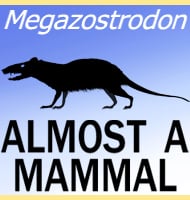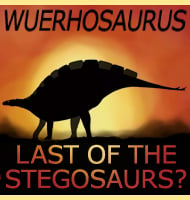In Depth
Not only was Orthacanthus very similar to the smaller Xenacanthus, it also has a similar temporal range in the fossil record. The two sharks probably coexisted with only the minimum of competition between the two. This is because at only one meter long, Xenacanthus could operate in waters that were too small or densely overgrown to support a three meter long predator like Orthacanthus.
As the larger of the two, Orthacanthus would have specialised in larger and more powerful prey that it would have seized with its double fanged teeth. The overall eel like body morph of Orthacanthus is a reflection of its habitat. Rather than being a pelagic open seas predator, Orthacanthus hunted in freshwater swamps and waterways that would have been densely overgrown in areas. By having a long body with short fins Orthacanthus could navigate these waters without getting stuck in submerged debris and vegetation. It’s possible that Orthacanthus may have used ambush tactics like lurking within the submerged debris and plants waiting for prey to pass by.
The spike that rises up from the back of the head of Orthacanthus seems to have been a defensive feature to stop other predators from clamping their jaws onto its head. These exact predators may still be unknown to science but they may have been other fish like Hyneria, or large amphibian tetrapods.
Further Reading
– Recherches Sur Les Poissons Fossiles. Tome III (livr. 15-16). – Imprim�rie de Petitpierre, Neuchatel 157-390 – L. Agassiz – 1843. – Descriptions of extinct Vertebrata from the Permian and Triassic formations of the United States. – Proceedings of the American Philosophical Society 17(100):182-193 – E. D. Cope – 1877. – Systematics and relationships among the Xenacanthiformes (Pisces, Chondrichthyes) in the light of Carboniferous and Permian French materal. – Acta Musei Reginaehradecensis S. A.: Scientiae Naturales 22:69-78 – D. Heyler, & C. Poplin – 1989. – Occipital spine of Orthacanthus (Xenacanthidae, Elasmobranchii): Structure and growth – Journal of Morphology vol 242 issue 1, p1-45 – Rodrigo Soler-Gijon – 1999. – Dentitions of Late Palaeozoic Orthacanthus species and new species of ?Xenacanthus (Chondrichthyes: Xenacanthiformes) from North America – Acta Geologica Polonica vol 49, issue 3 – Gary D. Johnson – 1999. – Early Pennsylvanian Xenacanth Chondrichthyans from the Swisshelm Mountains, Arizona, USA. Acta Palaeontologica Polonica 54(4):649-688 – G. D. Johnson & D. W. Thayer – 2009. – Morphology and histology of dorsal spines of the xenacanthid shark Orthacanthus platypternus from the Lower Permian of Texas, USA: palaeobiological and palaeoenvironmental implications. – Acta Palaeontologica Polonica. – Kimberly Beck, Rodrigo Soler-Gijon, Jesse Carlucci & Raymond Willis – 2014. – Data from: Fish and tetrapod communities across a marine to brackish salinity gradient in the Pennsylvanian (early Moscovian) Minto Formation of New Brunswick, Canada, and their palaeoecological and palaeogeographical implications. – Palaeontology. – Aodh�n �. Gog�in, Howard J. Falcon-Lang, David K. Carpenter, Randall F. Miller, Michael J. Benton, Peir K. Pufahl, Marcello Ruta, Thomas G. Davies, Steven J. Hinds & Matthew R. Stimson – 2016. – Orthacanthus platypternus (Cope, 1883) (Chondrichthyes: Xenacanthiformes) teeth and other isolated vertebrate remains from a single horizon in the early Permian (Artinskian) Craddock Bonebed, lower Clear Fork Group, Baylor County, Texas, USA. – Acta Geologica Polonica. 68 (3). – G. D. Johnson – 2018.










